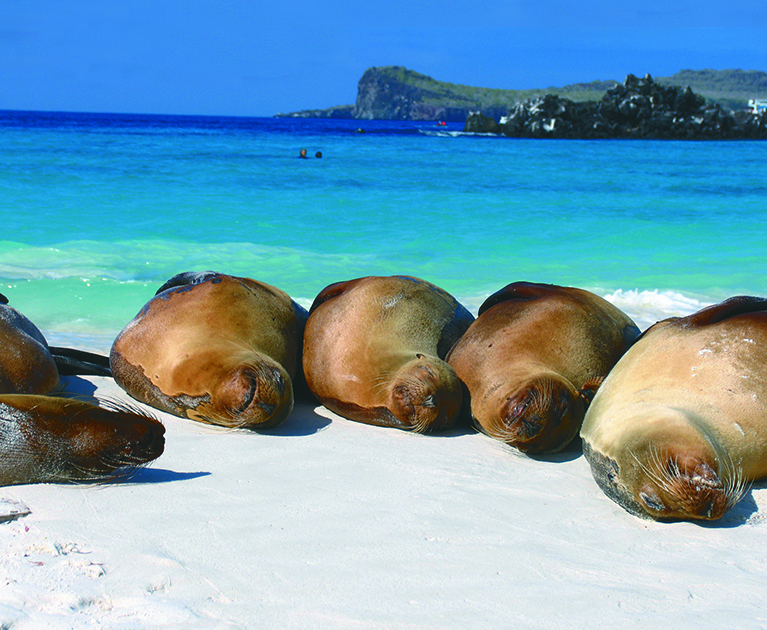


A thousand kilometres from the nearest continental landmass, straddling the Equator in the eastern Pacific Ocean, sits a group of islands and islets whose name excites nature lovers the world over. Although the islands have been known to Europeans since the sixteenth century, it was the attention of a young naturalist, Charles Darwin, that brought them into the spotlight as a haven of ecological diversity and geological interest. Today, visitors come from around the globe to see unique, endemic fauna such as frigate birds, Galápagos tortoises and marine iguanas in their spectacular natural environment.
Given the islands’ distribution on either side of the Equator, there is no wrong time to visit. The warmest, wettest months are December to May: keen snorkellers enjoy the warmer sea temperatures during these months. Peak season in the Galápagos is the so-called ‘dry season’ from June to August, when the temperatures are lower and marine species such humpback whales and sea lions come to town. If you are interested in specific species, it can be a good idea to time your visit to coincide with their activities: for example, the giant tortoises’ eggs hatch during December and January, while the blue-footed boobies only perform their distinctive and endearing courtship dance during the May mating season.
There are two main options for visiting the Galápagos: as a land-based tourist or as a sea-based cruise passenger. You can get to the island of San Cristóbal via a two-hour flight from the Ecuadorian port city of Guayaquil, and then travel between the islands using speedboat transfers or the shuttle flights that operate between three of the bigger islands. Many of the islands have strictly restricted visitor numbers and require you to be accompanied by a licenced guide in order to protect the wildlife and their habitats. Most visitors choose to stay for four to ten days, depending on the islands and wildlife they want to see, but for many visitors, a cruise is the more convenient option, given that it includes your accommodation, meals, transfers and expert guides.
Whether you prefer to spend your days on land, on the water or even under the water, you can expect to return from your time in the Galápagos with stories of amazing wildlife encounters. From snorkelling with sea lions and turtles to diving with hammerhead sharks and eagle rays; from walking among giant tortoises and penguins to spotting Darwin’s finches and Galápagos hawks, the abundance and diversity of fauna is astonishing. The archipelago itself is a collection of volcanoes: some ancient and some still very active, with the older islands being gradually consumed by the ocean and the youngest still being formed. Each island is different – among the most popular are Española, for its albatross, booby birds, frigate birds and marine iguanas, and Santa Fe, for its beautiful sandy beach lined with snoozing sea lions.
To make the most of your time in the Galápagos, you should come prepared for spending considerable time outdoors. Whether you plan to spend your days hiking to the most remote corners of these volcanic islands or simply sitting quietly, observing the local inhabitants, you’ll want to pack hiking shoes, comfy clothes, a swimsuit, rainwear and practical walking shoes. A refillable water bottle and environmentally friendly sunscreen will help to minimise your impact on the islands’ delicate ecosystems, while binoculars and a good quality camera will ensure you see what you came for. If you’re taking a cruise or planning to spend any time on water, seasickness tablets may also come in handy.
UNESCO has described the islands of the Galápagos as a unique living museum and showcase of evolution. Your personal travel manager can help you choose an itinerary that allows you to experience this amazing part of the world for yourself.